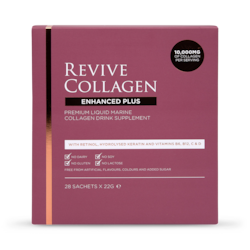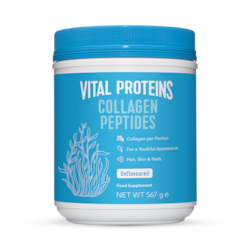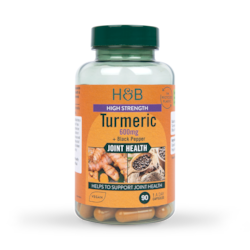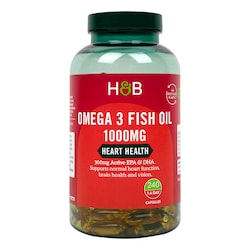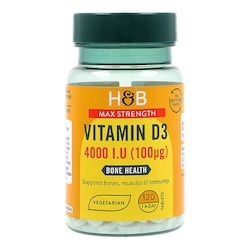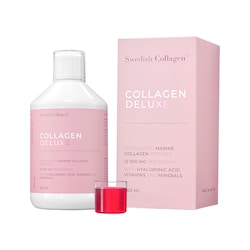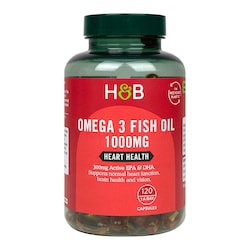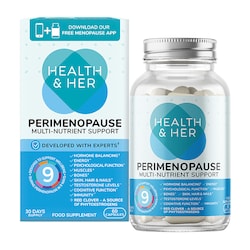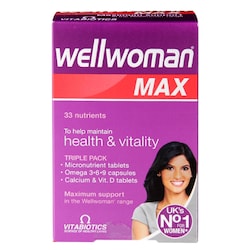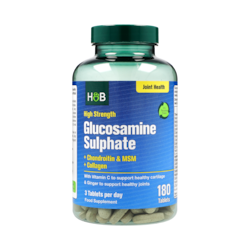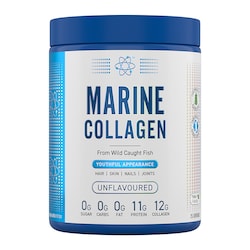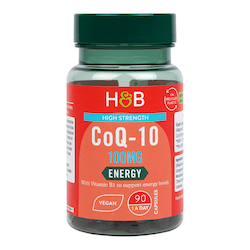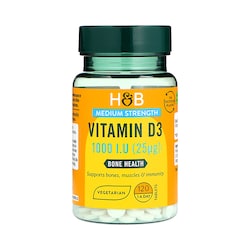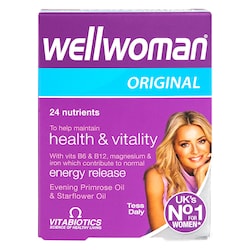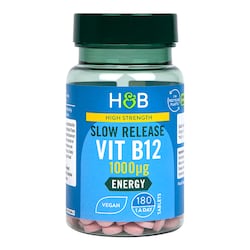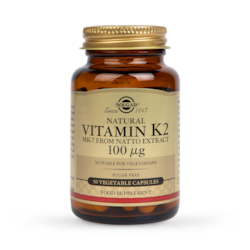15% off £30 OR 20% off £40
Code:CHOOSE
Everything you need to know about ‘vitamin F’: function, foods, deficiency and supplements

You’ll almost definitely have heard of vitamin C or vitamin D, but have you ever heard of vitamin F? (Spoiler: it’s not a real vitamin)
Summary
1What is vitamin F?
‘Vitamin F’ isn’t actually a vitamin. It’s a term for two essential fatty acids…
2What are its potential benefits?
Polyunsaturated fats can help to maintain healthy cholesterol levels, which in turn may help reduce your risk of heart disease...
3Should I take a vitamin F supplement?
By incorporating foods rich in these healthy fats, like seeds, nuts and plant oils, most people can meet their needs through diet alone…
Despite the name, ‘vitamin F’ isn’t actually a vitamin. It’s a term for two essential fatty acids – alpha-linolenic acid (ALA) and linoleic acid (LA).1
ALA belongs to the group of omega-3 fatty acids, while LA belongs to the omega-6 family.1-3 Your body can’t make ALA or LA on its own, meaning you need to get it from your diet.3
Put your science hat on as we dive into the world of essential fatty acids and tell you everything you need to know about ALA and LA (AKA vitamin F)...
What is vitamin F?
In the 1920s, scientists discovered ‘vitamin F’. Later research found that vitamin F was actually a blend of ALA and LA – but the term ‘vitamin F’ stuck.4
Today, the scientific community uses the more accurate terms of ALA and LA, but you’ll sometimes find wellness and skincare brands refer to vitamin F in their marketing.
ALA and LA are two types of polyunsaturated fatty acids:1-3,5,6 These fats are considered a ‘healthy’ type of fat your body needs in small amounts for normal growth and development.5,6
What are the sources of vitamin F?
Many of the best sources of vitamin F are plant-based – often found in plant and seed oils.3
You can get your daily fix of ALA and LA from:1-3,7

- vegetable oils such as rapeseed oil, flaxseed oil and soybean oil
- seeds, including flax, chia and hemp
- nuts (with a special mention going to pecans, which are an excellent source of LA, and walnuts for their ALA levels)
If you eat a healthy, balanced diet, you should be able to get all the ALA and LA your body needs.1
What are the potential benefits of vitamin F?
Researchers are still studying omega-3 and omega-6 fatty acids to understand their possible benefits. Although more research is needed, there’s some evidence that ALA and LA may support our health in various ways.
Polyunsaturated fats may help you maintain healthy cholesterol levels
Polyunsaturated fats may help to maintain healthy cholesterol levels, which in turn may help reduce your risk of heart disease.5,6,8
Cholesterol is a fatty substance found in your blood which can cause clogged or blocked arteries.5 Too much cholesterol can increase your risk of having heart problems or a stroke.6
he Harvard School of Health looked at many studies to see if eating more linoleic acid affects the risk of heart disease. They published their findings in 2017, after looking at data from over 300,000 people, and concluded that replacing saturated fats (for example. those in butter) with polyunsaturated versions rich in LA could help lower the risk of heart disease.
However, the studies they looked at only showed a link – so they can’t say for sure that LA causes less heart disease. Nonetheless, it supports the advice to eat healthier fats.9

How much vitamin F do I need?
The UK has no recommended daily intake for ALA or LA. The European Food Safety Authority suggests that you get 4% of your total energy from LA and 0.5% from ALA.3
A Western diet typically contains enough omega-6, so you don’t need to worry about upping your intake of linoleic acid.7
What are the symptoms of vitamin F deficiency?
In clinical terms, a vitamin F deficiency is called essential fatty acid (EFA) deficiency.
Although rare, it can occur in people with digestive disorders or severely fat-restricted diets, including malnourished children.10,11
Symptoms of EFA deficiency include:10,11
- dermatitis (dry, scaly skin)
- hair loss
- poor wound healing
- higher susceptibility to infection
- delayed growth in children
Should you supplement vitamin F?
EFA deficiency is rare if you follow a healthy, well-balanced diet.10,11 Most people don’t need to take ALA or an omega-6 supplement. This goes for children and pregnant women as well.
If you’re vegan or vegetarian, your diet may lack an adequate intake of the other omega-3 fatty acids, EPA and DHA. These fatty acids are mostly found in oily fish like salmon, sardines and mackerel.2
Although our body can convert ALA into EPA and DHA, the conversion rate is limited.2,3 The good news is that there are vegan omega-3 supplements derived from algal oil (a vegetarian source that comes from algae).
Many studies have examined the potential benefits of omega-3 supplements, particularly those with EPA and DHA, on conditions such as heart disease and brain health.2 However, there’s currently insufficient evidence to show that these supplements are beneficial.12
The final say
While 'vitamin F' may not be a true vitamin, the essential fatty acids ALA and LA are crucial for normal growth and development and overall wellbeing.
By incorporating foods rich in these healthy fats, like seeds, nuts and plant oils, most people can meet their needs through diet alone. But if you’re after a helping hand, you could also consider taking omega oil supplements.
Whether you're looking to improve cholesterol levels, support skin health or simply maintain a balanced diet, understanding the role of ALA and LA can help you make more informed choices about your nutrition.
The advice in this article is for information only and should not replace medical care. Please check with your GP or healthcare professional before trying any supplements, treatments or remedies. Food supplements must not be used as a substitute for a varied and balanced diet and a healthy lifestyle.
While we strive for accuracy and balance, please be aware that this article may discuss products available for purchase through Holland & Barrett. Consult a healthcare professional before making any health-related decisions.
- Arakelyan H. Vitamin F and health. [Internet]. [2021; cited 23 August 2024]. Available from: https://www.researchgate.net/publication/350092087_Vitamin_F_and_Health.
- National Institute of Health. Office of Dietary Supplements - Omega-3 fatty acids [Internet]. [2023; cited 23 August 2024]. Available from: https://ods.od.nih.gov/factsheets/Omega3FattyAcids-HealthProfessional/.
- EUFIC. The importance of omega-3 and omega-6 fatty acids [Internet]. [2019; cited 23 August 2024]. Available from: https://www.eufic.org/en/whats-in-food/article/the-importance-of-omega-3-and-omega-6-fatty-acids.
- Spector AA, et al. Discovery of essential fatty acids. Journal of Lipid Research. 2014;56(1):11–21. Available from: https://www.ncbi.nlm.nih.gov/pmc/articles/PMC4274059/.
- MedlinePlus. Facts about polyunsaturated fats [Internet]. [2015; cited 23 August 2024]. Available from: https://medlineplus.gov/ency/patientinstructions/000747.htm.
- British Heart Foundation. Fats explained [Internet]. [2021; cited 23 August 2024]. Available from: https://www.bhf.org.uk/informationsupport/support/healthy-living/healthy-eating/fats-explained.
- Whelan J, et al. Linoleic acid. Advances in Nutrition. 2013;4(3):311–312. Available from: https://www.ncbi.nlm.nih.gov/pmc/articles/PMC3650500/.
- European Food Safety Authority. Scientific Opinion on the substantiation of health claims related to linoleic acid and maintenance of normal blood cholesterol concentrations (ID 489) pursuant to Article 13(1) of Regulation (EC) No 1924/2006. [2009; cited 23 August 2024] Available from: https://doi.org/10.2903/j.efsa.2009.1276
- Farvid MS, et al. Dietary linoleic acid and risk of coronary heart disease: a systematic review and meta-analysis of prospective cohort studies. Circulation. 2014;130(18):1568–1578. Available from: https://pubmed.ncbi.nlm.nih.gov/25161045/.
- Morgensen K. Essential fatty acid deficiency. In Nutrition Issues in Gastroenterology, Series 164, Practical Gastroenterology. Series Editor: Parrish C. [Internet]. [2017; cited 23 August 2024]. Available from: https://med.virginia.edu/ginutrition/wp-content/uploads/sites/199/2014/06/Parrish-June-17.pdf.
- Bupathiraju SN, et al. Essential fatty acid deficiency [Internet]. MSD Manual Professional Edition. MSD Manuals; 2023. Available from: https://www.msdmanuals.com/professional/nutritional-disorders/undernutrition/essential-fatty-acid-deficiency.
- National Center for Complementary and Integrative Health. Omega-3 supplements: in depth [Internet]. [2018; cited 23 August 2024]. Available from: https://www.nccih.nih.gov/health/omega3-supplements-in-depth.



